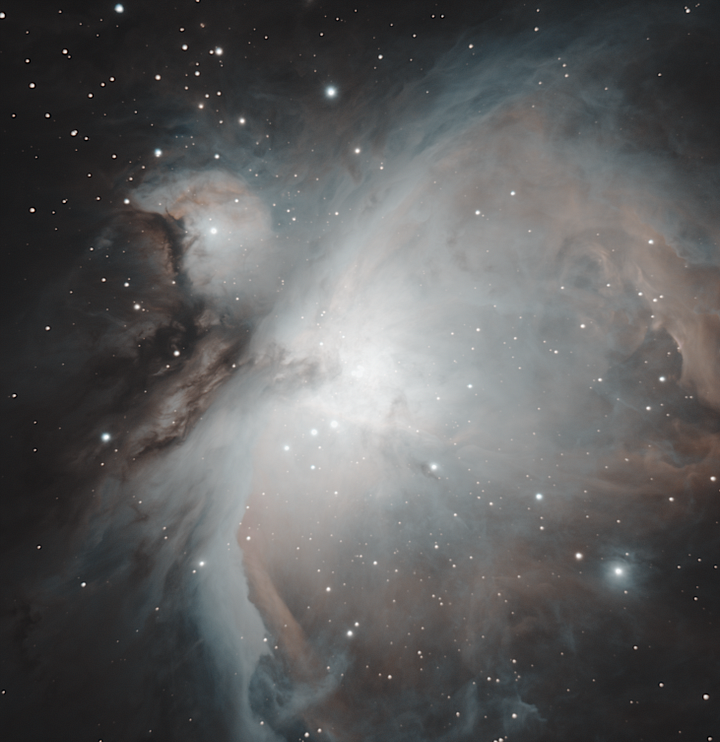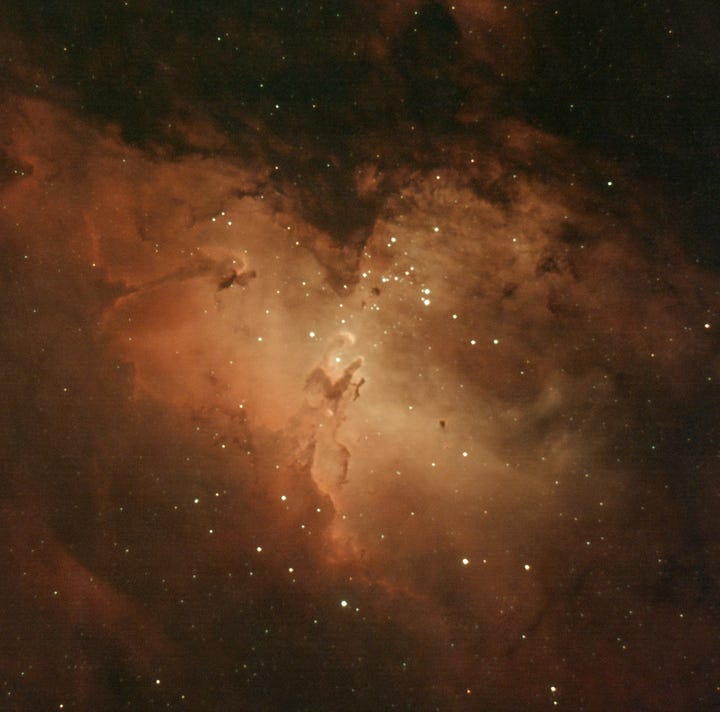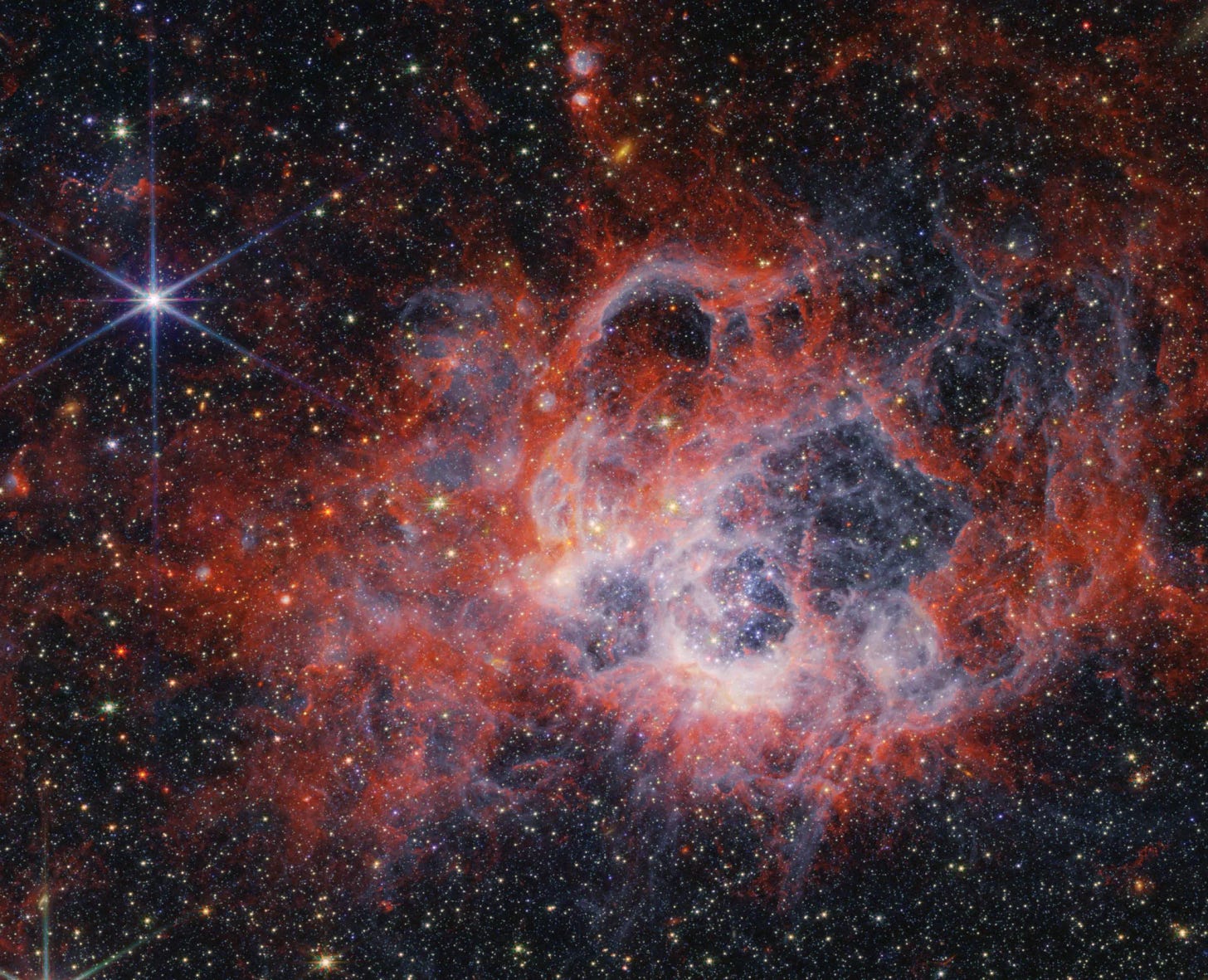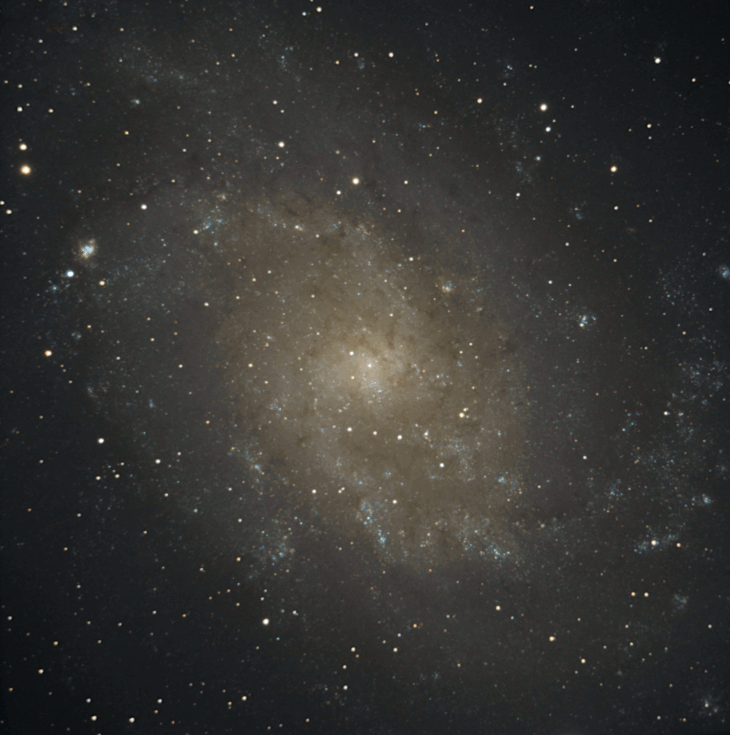Visit a nebula – in another galaxy!
TARGETS. NGC 604, one of the largest stellar nurseries in our galactic Local Group.
Emission Nebulae are large clouds of gas and dust, and they’re often (though not always) where new stars are born. Some famous examples like the Orion Nebula (M42) and Eagle Nebula (M16) are among the most popular targets for amateur astronomers – because they’re awesome to look at but also because of the reality of what’s going on within them. It’s fascinating!
Although M42 and M16 are truly enormous – at roughly 24 light years and more than 55 light years across, respectively – at least in comparison to our Solar System (2 light years, and that’s being generous, throwing in the Oort Cloud for good measure), they’re still tiny when compared with our galaxy (diameter: 100,000 light years). The reason they appear so large and vibrant in our night sky is because they’re both actually relatively close neighbors to Earth within our own Milky Way Galaxy, at a little over 1300 light years away for the Orion Nebula and 5700 for the Eagle.


So with all that in mind, when I tell you you can actually use a smart telescope to see a stellar nursery emission nebula within another galaxy, that probably sounds pretty crazy. I mean, our nearest fully-fledged galactic neighbor the Andromeda Galaxy is 2.5 million light years from here.
But it’s true! Because my target for tonight is none other than the nebula known as NGC 604. And its home the Triangulum Galaxy (Messier 33 or M33) is actually even further away than Andromeda, at more than 2.7 million light years from Earth. But NGC 604 is still visible in our scopes, and not just as some microscopic point of light but as a resolvable nebula shape, thanks to the fact that it’s one mightily impressive beast.
Favorite facts about NGC 604
Among the very largest emission nebulae in our galactic Local Group (which along with the Milky Way includes at least 80 galaxies and dwarf galaxies), NGC 604 is more than 1500 light years wide.
According to Wikipedia: “It is over 6,300 times more luminous than the Orion Nebula, and if it were at the same distance [from Earth] it would outshine Venus.”
NGC 604 is home to an impressive array of hot young stars, more than 200 of them, each vastly more massive than our own Sun.
German-British astronomer William Herschel first observed NGC 604 in 1784. For Herschel, the nebula stood out clearly enough it deserved a separate entry in his own catalog. Which, considering the primitive telescopes of his day – those astronomers could only dream of the views made so easy by our smart scopes – tells you just how prominent this target can be.
If you’re able to resolve NGC 604, most likely you’re actually also looking at quite a few other areas of extragalactic star formation within the same image – you may just not realize it. That’s because M33 is a hotbed of new star creation, popping them off at a rate 10 times that observed in Andromeda. Take a close look at my image below. Do you see how NGC 604 has the slightest blue-ish cast? Now, look at the rest of the galaxy. You’ll find similar but smaller pockets spread throughout M33, many of which are also stellar nurseries, though not nearly as large as NGC 604. See if you can spot these in your own stack! (note: the hints of blue in these areas were enhanced in post processing; they’re unlikely to appear noticeably blue in your live stack, but still the forms should be visible).
How I looked at it
Although galactically speaking M33 is a close neighbor, it’s still relatively faint and hazy compared with some other well-known galaxies. So I definitely got out of the city for this one, to a dark sky. If you can find even better that’s great!
M33 is a popular target, so it was as simple as punching it into my Seestar S50’s SkyAtlas and tapping the crosshairs icon.
Again, M33 is one of our more “demure and mindful” galaxies, so I was careful to make sure it was high enough in the sky to minimize atmospheric interference, and also to stack my image for a solid chunk of time so NGC 604 would stand out. Around an hour did splendidly.
Best time to look
Fall through to early winter is the best time of year to view M33 and NGC 604, with prime time during the months of October and November.
Bonus points
For a clearer view of galaxy M33, where its many stellar nursery nebulae stand out in great detail, including NGC 604, check out this spectacular mosaic from NASA. Made up of no fewer than 54 individual Hubble images stitched together, and with an interactive zoom feature. Properly mindblowing.
Did you know?
While NGC 604 is a highly successful nursery for hot and massive stars, the intense stellar winds and radiation pouring from these gigantic furnaces make the nebula a poor environment for birthing smaller stars like our Sun.
Given its proximity, scale and unusual character, NGC 604 has been the target of much scientific study into subjects like star formation and galactic evolution.
Considering it’s over 2.7 million light years away, and massive stars like the largest ones in NGC 604 sometimes live only a few million years, that means some of the young stars now contributing to the light we see from the nebula may already have reached the end of their lives and gone supernova!






Your images are pretty great.